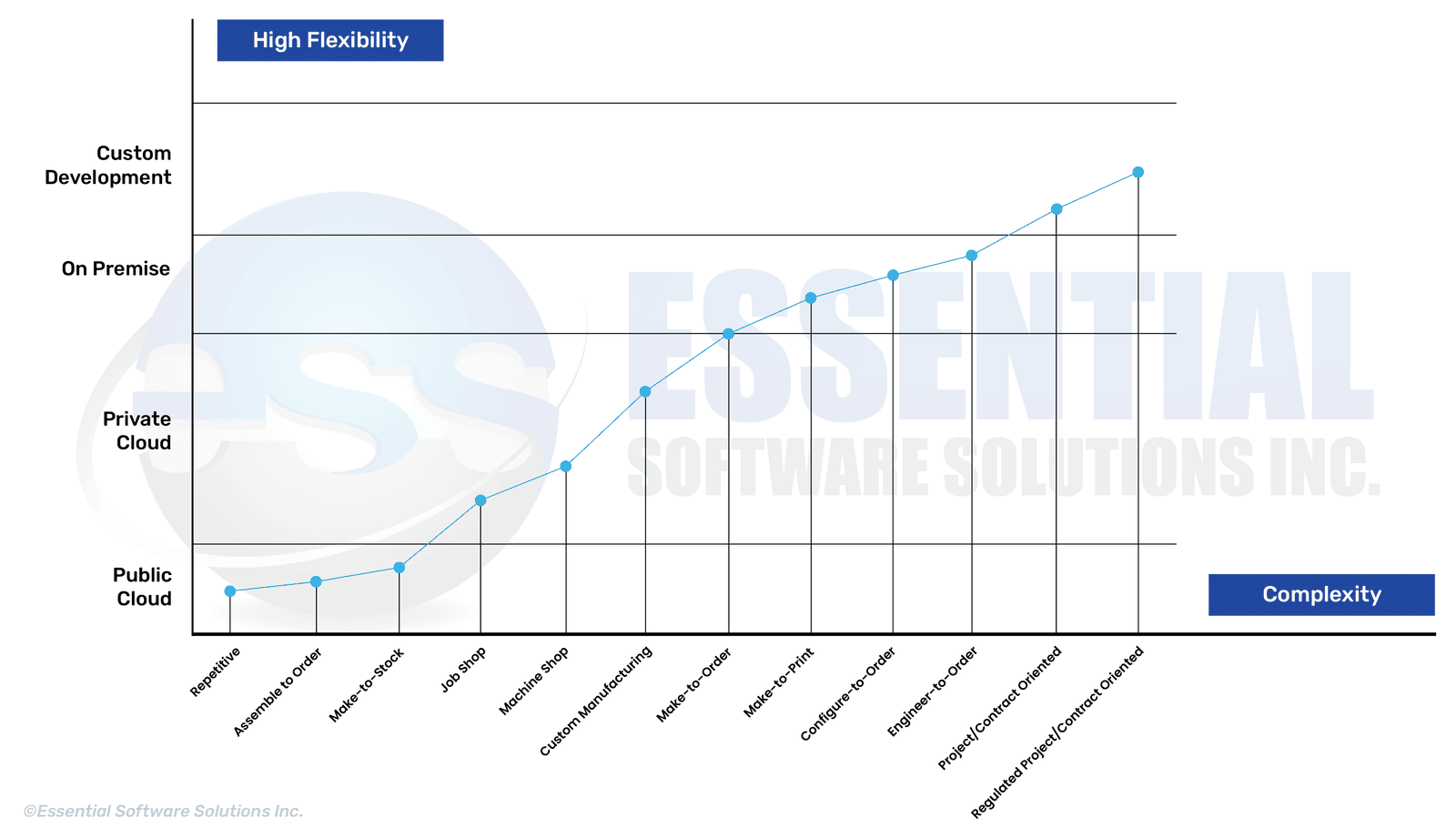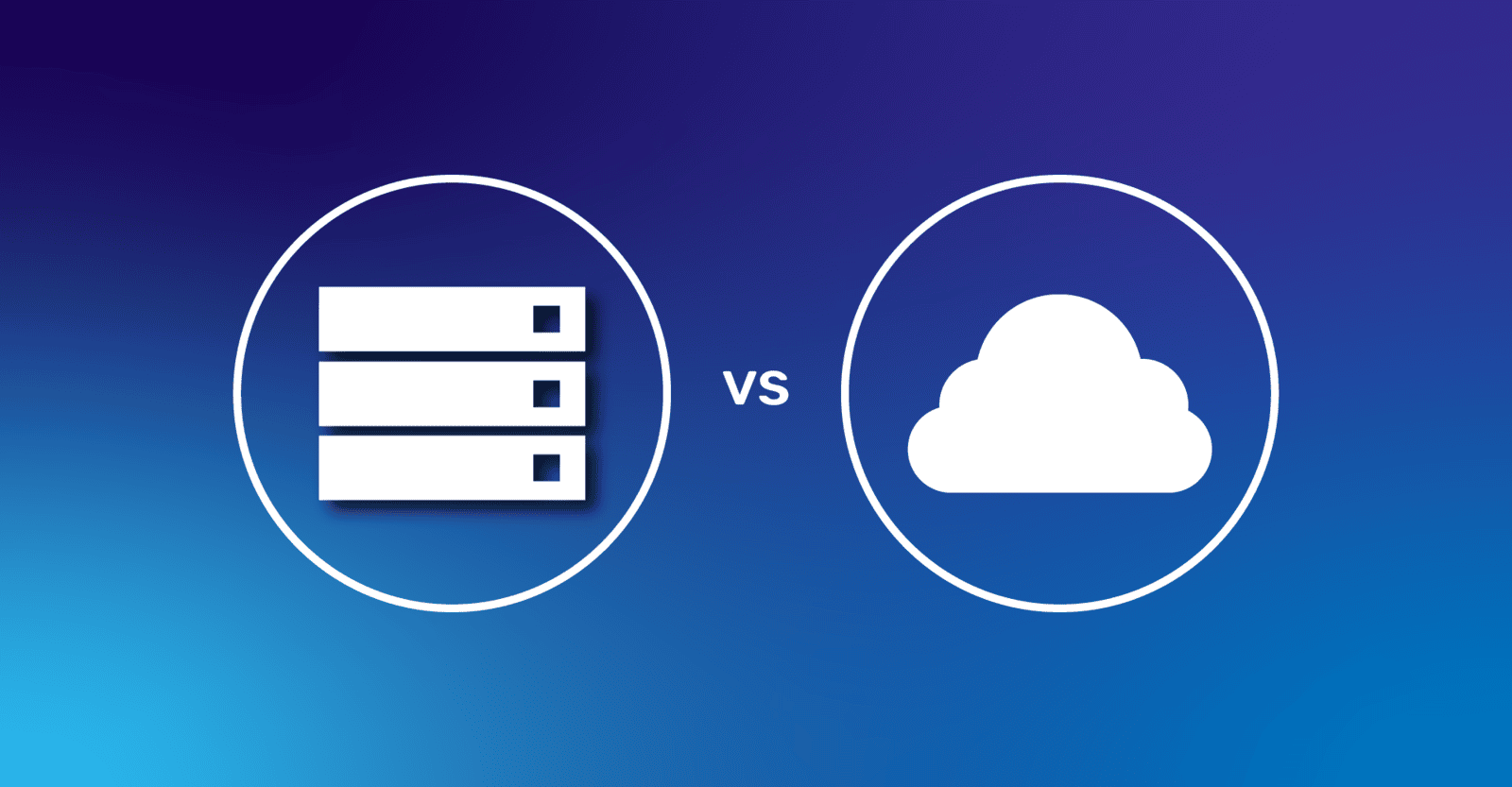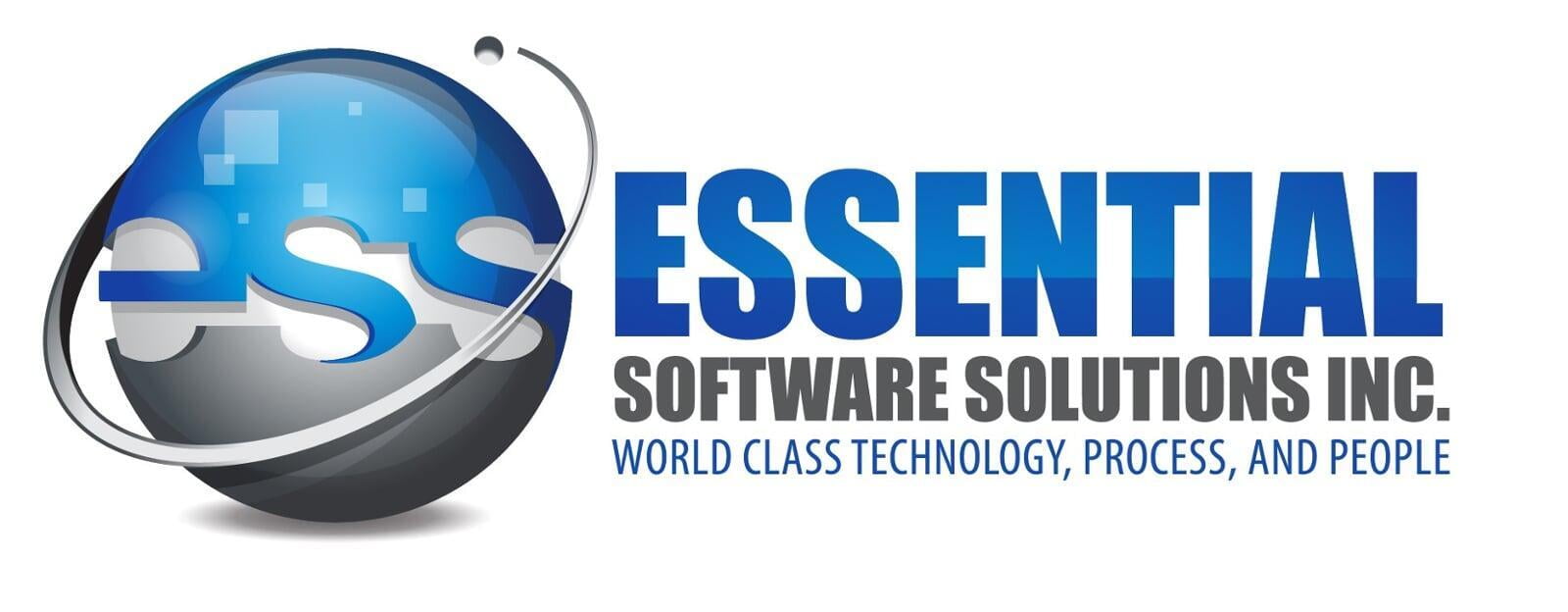Manufacturing Complexity Chart
The Common Traits of Complex Manufacturers
- Products with multiple sub-components, requiring precision production with multiple internal operational steps and external subcontractor services.
- A high degree of engineering design and revisions throughout the lifecycle of the end-item.
- Multiple material and service suppliers.
- Project and/or contract-controlled % revenue recognition.
- Long lead times and both long and short production runs.
- Low Volume Products, High Mix Processes.
- Highly regulated, quality-controlled industry.
Any of these characteristics mentioned above can result in underperformance, higher costs, and increased risk of ERP project failure. Additionally, the unique and critical requirements stemming from these common traits may not be accommodated in multi-tenant cloud ERP systems or may require customization (custom is a four letter word in ERP).
Private Cloud vs. Public Cloud and Their Implications for ERP Vendors
Private Clouds and Public Clouds are both available as SaaS license models. Public Cloud is the least expensive, whereas Private Cloud costs considerably more. ERP vendors favor SaaS models due to the steady revenue stream they receive, combined with perceived lower development costs. It’s no wonder there is a strong push to adopt Cloud ERP because Cloud is a more profitable option.
Public Cloud
The Public Cloud, Multi-Tenant Model, is popular due to its low SaaS licensing costs, uniform upgrades, and perceived lower IT support cost. For ERP vendors to pass these cost savings on to customers, they must rely on the homogeneity of their customers and a near commoditization of functionality. However, complex manufacturers are non-homogeneous, and their unique and critical requirements are rarely commoditized business functions.
Private Cloud
Private Clouds offer more flexibility than Public Clouds. The unique and critical requirements that complex manufacturers require are a level-up from the commodity functionality available in Public Clouds. Customizing applications, creating integrations to other systems, tighter data security and consolidated reporting from multiple sources are several examples of enhanced flexibility of a Private Cloud. However, they are initially (first year) more expensive than Public Clouds.
Complex Manufacturers' Need for Flexibility
Flexibility characteristics include integration, customization, control over upgrades, regulatory/security restrictions, and third-party application integration across deployment models. Each of these features breaks the homogeneity and commoditization rules of Public Cloud.
On Premises ERP
Even though On-Premises ERP offers the most flexibility of all deployment models, most ERP vendors highly discourage it. However inversely, for complex manufacturers in highly regulated industries, On-Premises offers a higher level of security and/or uptime.
Hosting, ASP, and Managed Services
Traditional On-Premises applications can operate in a Private Cloud model, but it is more expensive to do so. Hosting an on-prem application as a Private Cloud requires procuring third-party computing power and support, similar to Amazon Web Services or Azure . A key difference in the Hosting, ASP and Managed Services model is software “ownership”. It is only available with a Perpetual License of the software. Ownership provides the most flexibility. Creative financing can make On-Premises, Perpetual License act as an operating expense as well, but it usually remains more expensive than Private/Public Cloud SaaS fee alternatives.
Conclusion
Complex Manufacturers should consider a Hybrid deployment model that balances the benefits of Public Cloud with those of Private Cloud and On-Premises. This is the best of both Worlds. Drive commoditized business processes to a Public Cloud, due to economies of scale and reduced costs. Non-commoditized capabilities, or those that are unique and critical, should remain on Private Cloud and/or On-Premises, for data security and required flexibility. A tailored licensing model accommodating both SaaS and Perpetual licenses could be developed by only those ERP vendors/partners that support both licensing models on the same ERP.
Author(s)
Andy Pratico - Business Improvement Advisor & ERP Evaluation Coach
Brett Austin - Business Improvement Advisor














